#Iconology
Photo




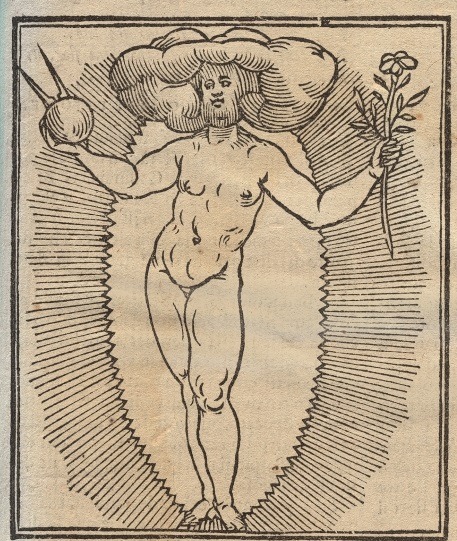



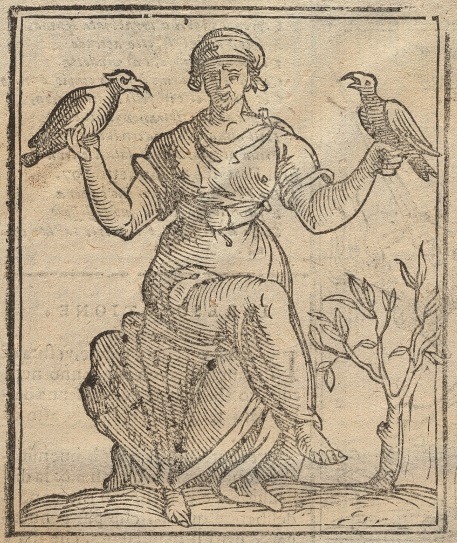

Cesare Ripa, Vergogna honesta (1645)
180 notes
·
View notes
Photo
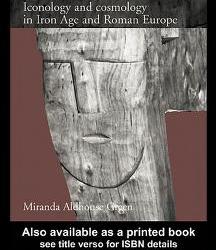
https://archive.org/details/MichaelJ.HarnerHallucinogensAndShamanismBookFi/%5BMiranda_Aldhouse_Green%5D_An_Archaeology_of_Images%28BookFi%29/
14 notes
·
View notes
Text





CONGRATS MISSY!
Missy Elliott is now immortalized as a wax figure at the Madame Tussauds Wax Museum! It was announced almost an hour ago today by the icon herself as well as @madametussaudsusa
What are your thoughts?
2 notes
·
View notes
Text

Saint Christopherus Carrying the Christ Child
Albrecht Dürer, 1511
Woodcut, c. 21 × 21 cm (8¼ x 8¼ in)
0 notes
Photo

Is less really more? Oh my, who wins? Vermeer? Or the cave wall painters? Utilitarians or ornamentalists? #lessismore #stickmen #drawing #iconology (at Mengo, Uganda) https://www.instagram.com/p/CmBKl4roXP0/?igshid=NGJjMDIxMWI=
0 notes
Text
WHO IS CROWLEY AFTER THE FALL?
so there is a LOT of debate over who Crowley was before The Fall. I have seen a lot of headcanons going around the place saying he was Raphael or Kokabiel or Baraqiel.
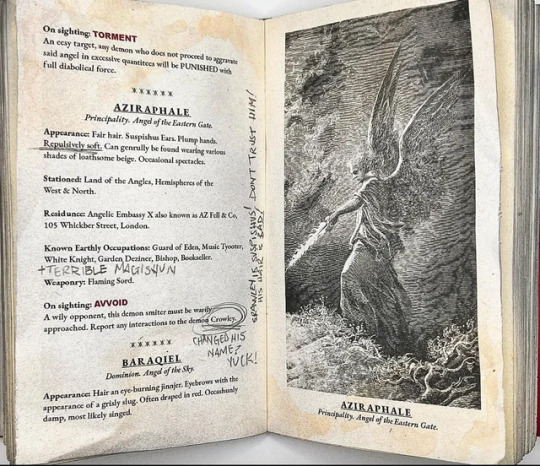
I mean this is the Exhibit A for saying that Crowley is Baraqiel. I think NOT.
Because this is a handbook written by demons for demons. The title is literally (if my memory serves me right) a guide to angelic beings that walk the earth. SO Crowley is not That..
Other than the red hair thing, no other physical characteristic matches. This Baraqiel guy sounds like an absolute gremlin. grisly slug, occasionally damp. NOT CROWLEY. I mean she's the most dashing thing around.
NO. #3 It says CROWLEY one line above the name Baraqiel. If Crowley is Baraqiel then why would his demon name appear right under that?????
And I think somewhere Neil Gaiman refuted this theory (I'm not really sure but I think so plz don't come at me with pitchforks if I got it wrong). So.......
But this is all beside the point. What I'm trying to say is that too much has been said about who Crowley was before he fell. There is very little, if not none, that has been said about who he was After.
Some say that he's an insignificant demon or some loser guy in Hell or whatever the equivalent of an angel principality deputy on Earth is.
I BEG TO DIFFER.
He is Important. Just look at the kind of assignments he's given. Original Sin, Major Historical Temptations and Evil Acts, Delivering the Antichrist and bringing about Armageddidn't.
But who is he exactly??????????
So canonically we're never told what Crowley's rank in Hell is. But there are more that enough hints for us to figure that out for ourselves.
But where does one place him when the hierarchy is so complex and varying across different historical and theological sources.
Such as here:
I have been thinking about this and I have two current theories
Crowley is Astaroth
Crowley is The Leviathan
I'll discuss only one in this post. I'll save the other for the next post.
Now book!Omens clearly tells us that Crowley or Crawley is not his real demonic name. For those who haven't read the book this happens when Hastur Lavista and Ligur come to hand over the antichrist to Crowley in the churchyard and as he's about to sign his name as "Crowley" they tell him to sign his real demonic name.
Are you with me?!!!!!
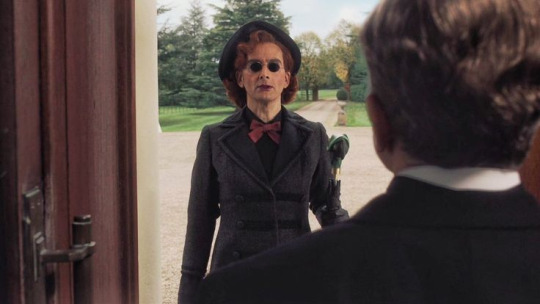
NANNY ASHTORETH!
Why did she use this particular name for her nanny disguise. What if...... what if this IS her real demon name.
A lot of my real life friends are annoyed beyond measure by my constant ranting about etymologies, origin and construction of discourse and epistemology, especially when it comes to presenting my thesis over how all Abrahamic religions and their symbology and iconography is, how do I put it, inspired from pagan religions that they expunged. I mean the concept of angles, the man shaped being with wings that is actually just a ball of fire or eyes or hale discs or sth is a pagan Persian concept.
Back to the matter at hand.
Ashtoreth, Astaroth, Astarte, Ishtar, are all the same name in different dialects and languages. All of these refer to a certain Babylonian goddess. When the People of God probably cleansed off all the infidels they decided to literally demonize their god and name a demon after her. In Milton's Paradise Lost Astaroth is one of the three princes or Grand Dukes of Hell alongside Beelz and Lucifer. If this theory might be true Crowley is a Prince/Grand Duke of Hell.
Now this gets even more interesting. Ashtoreth, Astarte, whatever you may, is a goddess of fertility and is associated with childcare. I mean at this point I just stopped to marvel at the attention to detail that Mr. Gaiman's work hold, the smallest hidden meanings in the storytelling.
Another thing. The Babylonians built these temples called ziggurats to worship Astarte and they looked something like this
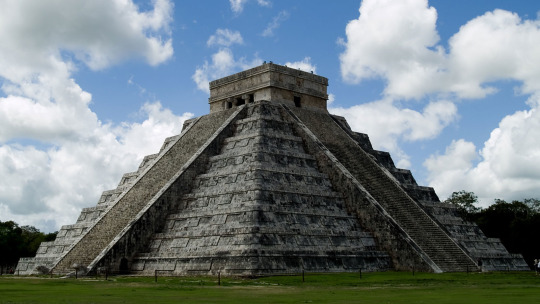
and this

they were also known as sky temples.
Because Astaroth was first and foremost the goddess of stars and the Babylonians were stargazers and the temples were constructed as a stairway to heaven to take them closer to the stars and functioned as an observatory at times.
I'm just imagining Crowley turning up in ancient Babylon and with her other-worldly looks, knowledge of the stars and compassion for children they just..... started to worship her.
Before the Christians came and declared them pagans and the rest is history.
Continued in next post for the second theory......
#good omens#crowley#nanny ashtoreth#nanny crowley#neil gaiman#ineffable husbands#good omens season 2#good omens meta#good omens brainrot#paradise lost#john milton#christianity#Babylon#history#religious iconology#meena rants#witers on tumblr#azicrow#aziraphale x crowley#go s2#go season 2#give me season 3 or give me death#bible fanfiction#leviathan#demons#angels#Astarte#Ashtoreth#Ishtar#etymology
196 notes
·
View notes
Text
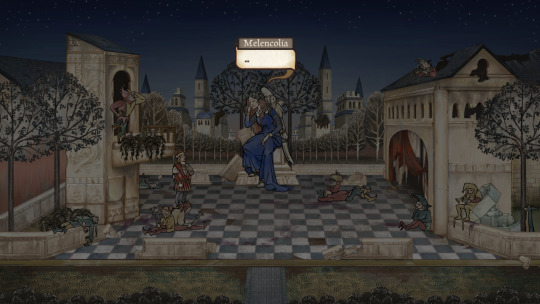
#this makes me want to really get into iconology again#the first time a prof taught us something different in our major was our medieval art prof#I guess it was didi huberman she was referencing or maybe directly warburg talking about precisely this in durero and others#she also talked about how it was kind of like a performance how they reenacted (?) reading it outloud and such the judgment day in front of#a judgment day relief#idk it was just such a different perspective on art history. im grateful i was in her class#I wanna re read some papers i think the judgment day theme one was specifically talking about el Pórtico de la gloria in Santiago#and going back to melancholy. the hand in the cheek... yeah affects and the body and how it metamorphs over time. new summer obsession mayb#jugando al pentiment
3 notes
·
View notes
Text

1 note
·
View note
Text
A Modern Harvested Look Into Dionysos Nykletios

[ID: A mostly green image with a large, vibrant grape left to the left and blurry brown grape trunk in the background to the off-centre. Next to it is a large, close up image of an unripened verdant grape cluster.]
LITTLE DO MOST PEOPLE KNOW THAT MUCH OF THE MODERN GRAPE HARVEST HAPPENS AT NIGHT, as dedicated winemakers wish to ensure the consistency of their crop��lord Helios’ rays are what ripen the fruit, at the mercy of Dionysus’ influence. Other times harvest does during cool days, but the harvesters are still pressed to ensure the safety of the harvest—hot fruit spells problems for the winemakers, and winemakers are what buy the crop to ferment. And when I was there on the cool afternoon, Helio’s light fading from the horizon, I felt Dionysos there with the whisper of Nyktelios.
THE HISTORICAL CONTEXT
Nykletios (Νυκτελιος “of the night”) is an epithet only directly mentioned perhaps once, kin to Hestios; as such it may be hard to get a direct usage on the meaning of this epithet. Pausanias states:
Pausanias, Description of Greece 1. 40. 6 (trans. Jones) (Greek travelogue C2nd A.D.) :
"After the precinct of Zeus [in Megara] . . . you see a temple of Dionysus Nyktelios (Nocturnal), a sanctuary built to Aphrodite Epistrophia (She who turns men to love), an oracle called that of Nyx (Night)."
Riding the Phallus for Dionysus suggests that this epithet may be connected to a larger mystery cult, that of a veiled Dionysus, with rites perhaps similar to the one Plutarch mentioned. Several of Dionysos’ rites occur within darkness—within Agros, his rites were nocturnal, invoking the terror and awe of Nyx’s darkness. His other mysteries likely involved the night as well.
Night is also invoked several times with Dionysos, such as in the Bacchae. One example I associate with Nykletios are these lines from Dionysos and Pentheus:
ΠΕΝΘΕΥΣ
τὰ δ ̓ ἱερὰ νύκτωρ ἢ μεθ ̓ ἡμέραν τελεῖς;
ΔΙΟΝΥΣΟΣ
νύκτωρ τὰ πολλά· σεμνότητ ̓ ἔχει σκότος.
Pentheus
When you dance these rites,
is it at night or during daylight?
Dionysus
Mainly at night. Shadows confer solemnity.
Even as these rites are no longer practiced, it is almost fitting that modern harvests mostly occur at night—and winemaking during harvest season can easily draw into the dark nights as well, as we work on the grape and yeast’s schedules, not our own.
A MODERN TAKE ON DIONYSUS NYKLETIOS
As epithets can have multiple functions, I place Dionysos Nykletios in both the night harvests of vines, comforting frozen hands as we harvest fruit for the best vintage, along with his endemic nocturnal rites. The modern wine world is both alike and like the ancient one—the wine season is still within winter, with the worst moments for a winemaker being the time before Christmas until next March when the wines are finishing.
If there was a day a hellenic pagan vineyard would exist, I would imagine that a procession would be in store for a religious harvest—though, there would not be any free juices allowed to paint the skin red. When you harvest grapes for wine, you do not want to burst the berries, and I could imagine Dionysos’ laugh when it eventually occurs.
Dionysus Nykletios,
May your hands warm us
Under eternally Dark Nyx
As the vintage is pressed
And made into your
Fine wine.
References
Csapo, É. (1997). Riding the Phallus for Dionysus: Iconology, Ritual, and Gender-Role De/Construction. Phoenix (Toronto), 51(3/4), 253. https://doi.org/10.2307/1192539
Gilbert Murray, & Ian Johnston. (2015). Euripides Bacchae: A Dual Language Edition. Faenum Publishing Oxford, Ohio.
#dragonis.txt#paganism#witchcraft#pagan#hellenic polytheism#helpol#witchblr#dionysus devotee#dionysos deity#dionysus deity#dionysus worship#hellenic polytheist#hellenic pagan#paganblr#pagans of tumblr#deity worship#vīnum
20 notes
·
View notes
Text
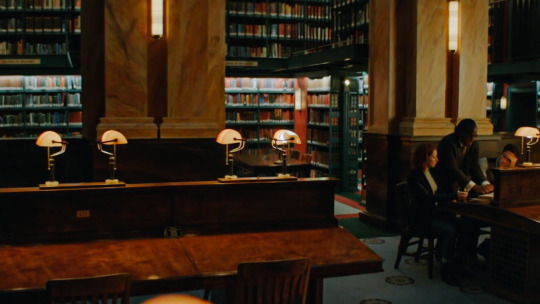
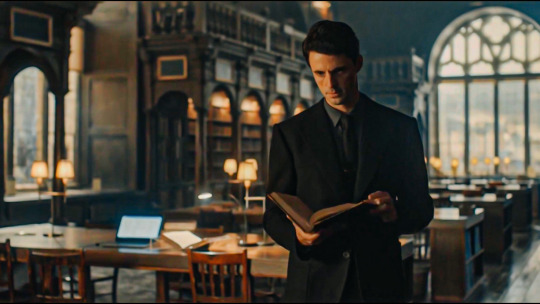
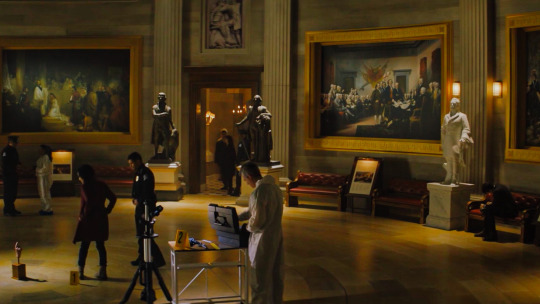
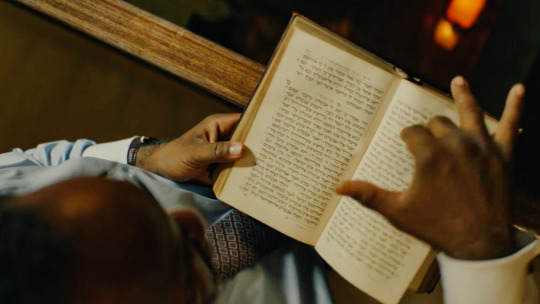



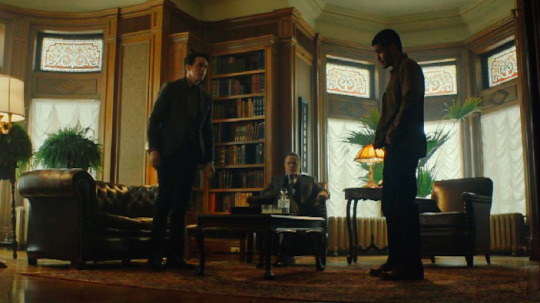
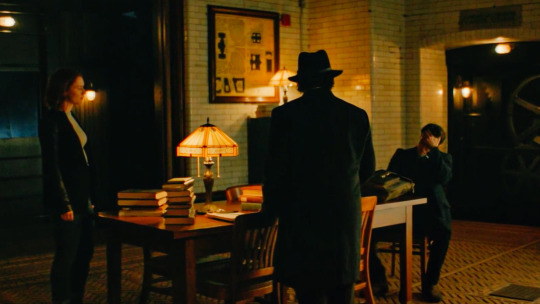

robert langdon au
known for a brilliant problem-solving mind and his genius, langdon has an eidetic memory. as professor at harvard university, he teaches religious iconology and the fictional field of symbology.
langdon was a diver at phillips exeter academy in prep school and played water polo at princeton university where he went for college. at the age of seven, langdon fell into a well and was trapped there at night. this led to him developing claustrophobia, which is believed to persist in the following years.
he has a cold calculating look. robert is always secretive and silent, but his lectures put into a trance. he amazes with his charm, and his voice sounds like music.
#matthew goode#robert langdon#dan brown#professor robert langdon#matthew goode moodboards#matthew goode icons#the lost symbol#dan’s brown the lost symbol
74 notes
·
View notes
Note
im not a gamer but i love learning about the lore/themes of fromsoft games. tarnished archeologist on yt analyses architecture and connects themes with real world art history, i thought maybe youd find it interesting
im sorry anon, but this guy drives me bonkers but i think its bc he has historian degree brain and i have art degree brain.
what i mean is: there's a statue in old yharnam that depicts a woman and her attendants looking up while tending to a corpse. this one

he interprets this as everyone looking up toward an unknown celestial event unmentioned in canon. his reasoning is that because there are some real life historical examples of art made under similar circumstances (witnessing an eclipse or meteor or something like that), that this must be another example of such a thing. he also very baselessly assumes that the woman depicted in the center is the same woman in every statue and decides she was the center of the church and what he assumes is the "old religion" prior to the founding of the church.
but this completely removes bloodborne from its very specific aesthetic influences and like...established canon. soulsborne dorks (me) love to over think tiny details but the invention of characters based on the frankly bizarre idea that all women are the same is a little much lol.
here's how i interpret this statue:
the statue draws very heavily from roman catholic iconology, like the rest of bloodborne. however, it is a surface level scraping of the spooky imagery from catholic art throughout human history. there is very little ACTUAL connection to catholicism. there is no christ figure, no god, no holy spirit, and no literal madonna.
the woman at the center is a maddona-type figure in her posing, but his analysis forgets that pthumeru AND yharnam were/are matriarchies. maybe there was a king in yharnam once but annalise is/was queen. all the blood saints we meet are women, exclusively. the veneration of women in general should not be that surprising in bloodborne.
it is not depicting a stargazing event because everyone is looking in different directions.
its not even clear if the statues have eyes or if their eyes are even open; i assumed that they were closed in religious rapture
they are indoors lol. like NOW the roof is collapsed but it wasn't when the church was built
this statue is located in the church of the good chalice, which was built to worship the undying holy blood. i think he has it right that this body is being prepared for burial, but it's completely dried out and desiccated. it resembles the corpses in the chalice dungeon coffin-chests and used by the labyrinth madmen to beat you
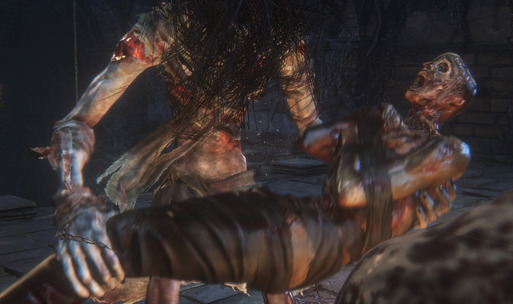
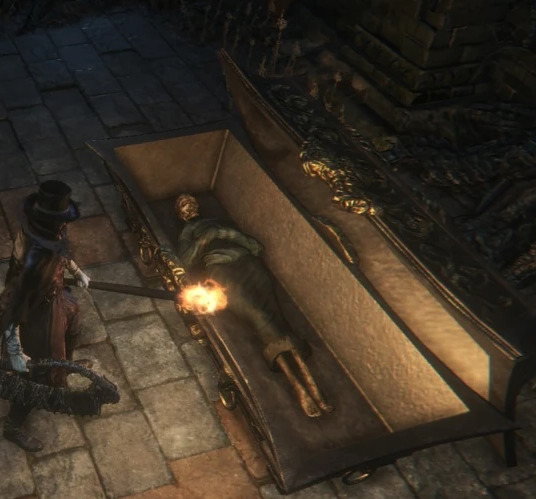
a similar figure is seen in the statue covering up the entrance that leads you to old yharnam. in fact this might be the exact same one without the broads lol.
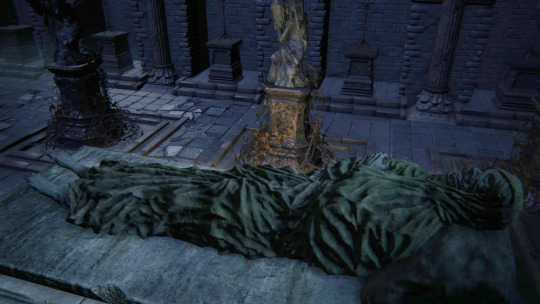
i dont know what this is supposed to depict but my best guess is a used up blood saint drained completely dry. but big emphasis on "guess"
33 notes
·
View notes
Text
The myth of Apollo (5)
And here is the last part of Françoise Graziani’s article « Apollo, the mythical sun » (begun here).

IV/ The mystical Sun
The interpretation of the Sun as a symbol of royalty was already present during the Renaissance but was truly amplified by the baroque era. This iconological interpretation was first punctually associated with the panegyric (Ronsard in his “Elegies” wrote “Henry, the Sun that inspired me”), then to the emblematic, as the royal crown was depicted as a crown of sun-rays. While Tyard saw a positive symbol within the idea of the Sun “Prince and rector of the sky”, the baroque poet Drelincourt, in 1677, compared it to a “superb King, who shines in his Court, Crowned with rays” – but only to better accuse the celestial body of being a simulacra of God, a “weak painting”. Within the same idea, Du Bartas substituted the false pagan god to the real God: “The world is a cloud through which shines, not the bow-shooting son of the beautiful Latone, this divine Phoebus, but…”. It is very revealing that Drelincourt presents a critical and desacralizing interpretation of the sun, where it loses its mythical name and function… while writing within the court of Louis XIV, right as the king ideologically concretizes the literary allegories by depicting himself within Versailles (the “house of the Sun”) as Apollo, as the sun on earth. Drelincourt concludes his sonnet “About the Sun”, by insisting that the Sun is just the “portrait of the Primal Cause”: “your brightness is but a Shadow, and you are not the Sun anymore”. The mythical Sun is a false sun, but it is replaced in the metaphorical heaven by the real mystical Sun, the Christ, that the Renaissance paintings sometimes depicted under the traits of Apollo. As a reflection of the true God, as the interpret and the vehicle of God’s light, the Christ was a solar character, whose death was thought as bringing a “night” to the Western world (it was how the poets metaphorize the eclipse that occurred during the Crucifixion). This identification, very common within the mystical baroque poetry, was sometimes pushed to the point of including (in a very unusual way) some episodes of Apollo’s legends within the Christian allegory (such as Hyacinthus or Clythia).

V/ The Sun of intelligence
The mystical sun is, in a paradox that determined all poetic interpretations, linked to the decline of the mythical sun. And yet, the mystical sun is born from a very old topos, the one of the Deus Pictor: if God is a painter, and the Universe his painting, than the Sun (and the poets claim it since the Hellenistic times) is his brush. In the baroque era, the solar myth, heavily used in a metaphorical (not quite allegorical) way, leads this motif towards the realm of abstractions. Every time it appears, it is linked to two elements: on one side, the Sun as a divine principle and an instrument of creation which becomes the double of the poet (a poet that now dares associate himself with not just Orpheus, but Apollo). On the other side, the diurnal travel of the solar eye becomes the metaphor of the process of writing. Numerous baroque texts play on the similarity between the words “rayons” (the rays) and “crayon” (the pencil), to show the Creator in his picturesque and scriptural functions. In a similar way, it is traditional to punctuate long poems by various sunsets and sunrises, described in such a way that they establish an analogy between the rhythm of the days, and the rhythm of the poem itself.
It is for example the case within G. B. Marino’s “Adone”, where, at the end of the poem, the Muse answers Apollo’s call, and comes to “end the thread of this long canvas”, and the end of the last day is described in textual terms: “The sky is of paper, the darkness of ink, the ray a feather / Which with the sun erases the ending day to write / to the West, in letters of gold, the end of the long travel.” Within “Adone”, Apollo is present under different shapes. He is found, in a metaphorical way, in the character of the hero, Adonis, which ultimately is just a gaze that crosses the various spectacles of the universe (celestial world, terrestrial world, cultural world) and is often compared, due to the “shine of his youth”, to Apollo. As the sun is the eye that brightens the world, that reveals the world and that allows it to be, the first creating gaze over the poem is done by the poet itself ; but there is another sight, the image of the human eye that reads and interprets the great Book of Nature. Adonis, within Marino’s poem, plays this role of reader, the double of the creature to which the secrets of the creation are hidden. He is, too, a “false sun”, and this is why Marino show him as a passive hero who, throughout the poem, does not understand what he sees: it is a reverse image of the philosophical sun of the Renaissance. He symbolizes the human soul, in the idea that the human soul only perceives the appearances, and mistakes itself for the sun because it was created in tis image. Marino’s Adonis is a “lonely eye” to which the gods (Venus and Hermes) reveal secrets, but the only world that receives the light of his gaze is the one of the book, of which the real writer is Apollo, “he who brightens the wise minds”. He who shines upon the minds embodies the last avatar of the god of Poetry: the divine Intellect, he who makes the minds shining and insightful, he who gifts human with both invention and divination. The solar sign valorizes the human Intellect, and more so over the individual intelligence. The god doesn’t “inspire” anymore, but he does more by “shining” upon the artistic works.
Apollo is more and more disguised as time passes by, to the point of losing his name – he is substituted so much he is even refused the qualificative of a god. He keeps however, as a mythical sign, a great coherence. The abstract uses of the Sun as metaphors for the divine eye contain very clear remains of its mythical nature. The connotations tied to the solar figure are simply the transpositions, on a metaphorical plane, of the elements tied to the god. The frequency of his use throughout the 16th and 17th centuries proves its almost ritualistic value, even though literature splits itself from the myth. As such, it seems that, as soon as the poetry does not bear the myth of the inspiration anymire, the figure of its titular god is slowly abandoned. Even though the invocation of the Muses persists, as a convention or as a periodical element, all the way to the 19th century. The names of “Apollo”, “Muses” and “Lyre” are enough to designate, by metonymy, and outside of all myths, the very concept of poetry.

VI/ Hyperion
With Romanticism, Apollo becomes the Archer again. The divine inspiration of the poet is not an illumination or a revelation anymore, but a shock, a stupefying possession. The poet, as Hölderlin writes, is “struck by Apollo” and, confronted by the presence of the god, he can’t be understood by other humans anymore. The poetic vocation is assimilated to a curse, and to a suffering. Within Hölderlin’s work, Apollo is fused with both Jupiter, he who strikes with the blinding lightning, he who “shakes and vivifies”, and with Dionysos, to condense itself ultimately in the figure of the Christ. He also especially identified with the one who was, according to Hesiod, his grand-father, the titan Hyperion. Just like Hyperion, of which he bears the name in the allegorical novel of Hölderlin “Hyperion”, the poet is a fallen and exiled titan, whose rebellion (pre-apollonian actions) are doomed to failure, but who keeps the vague memory of his solar origin and of his mission, while still being, like the sun, doomed to loneliness. A loneliness which, in this context, bears both a positive aspect, as the solitude which brings exaltation, and a negative aspect, the solitude which makes the poet a cursed man or a mad man. Apollo and Dionysos become one within the Romantic conception of madness as a sign of both divine election and mystical drunkenness. The fundamental ambiguity of Apollo is found back within the duality of the poetry, perceived as both a grace and an eviction. This duality was felt by the Romantics on an individual plane, and not on a conceptual plane like in the Renaissance.
An exceptional occurrence of the figure of Apollo within literature must be studied, quite close to Hölderlin’s own interpretation. Apollo appears as the subject and the hero of a 19th century literary work in only one piece, an unfinished poem by Keats which was also called Hyperion (1819). This brief epic of a Miltonian style depicts the fall of the Titans, banished by the New Gods, and the rise to divinity of the young Apollo, initiated by Mnemosyne. Within Keats’ writing, just like within Hölderlin’s work, Apollo is treated as the symbol of a “new beauty”, and as the tutelar god, not to say the embodiment, of the New Poetry. For both men, the accent is put on the “divine future” of Apollo: for Keats, Apollo only becomes a god when, thanks to Mnemosyne (who is in mythology the mother of the Muses), he understands his divinity, and this accession to Knowledge is a painful process. Apollo, before striking the poets, suffers himself from an “agony as burning as death is cold”. And he screams painfully when he was his epiphany. Within Hölderlin’s, the name Hyperion symbolized, by an antonomasia, the splitting of the hero, a hero turned to the Ancient Gods, that feels himself as their interpret, and yet is destined to inaugurate the renewal of the Teenager Sun through a New Poetic Religion. The poet which is speaking here is not yet born, and Hyperion represents the mythical prehistory of he who will only become a god, a pure lonely spirit, the “Hermit of Greece”, free of all heroic temptations, only after Romanticism. In a similar way, Keats brutally interrupts his poem right as Poetry is born.
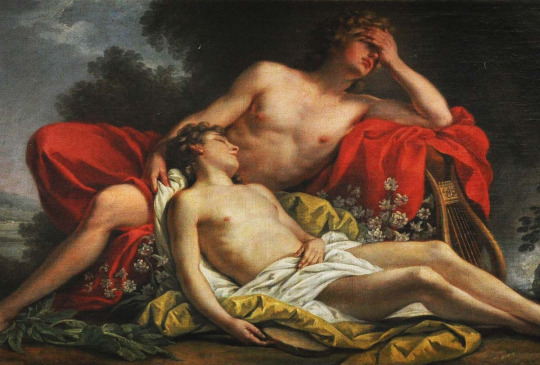
#the myth of apollo#apollo#hyperion#greek mythology#poetry#greek gods#symbolism#sun#titans#keats#hölderlin#christianization of greek myths#greek myths#poetic symbols#literary myths
7 notes
·
View notes
Text
Imagine being a Christian girl, and having Tate try to change your faith.

“Tate, you need to stop doing this - please,” You pleaded as you turned the crucifix on your bedroom wall from the upside down position, down to what it was supposed to be.
The teenage ghost rolled his eyes. “It’s either upside down, or you’re taking it down. He creeps me out.”
“He creeps you out?” You asked, more than a little surprise. This was the school shooting Tate Langdon after all, the one who constantly fiddled with the religious iconology of your family, teasing you about it relentlessly. But this was something new.
“I feel like he’s always watching me. Watching us. It’s hard enough getting alone time with you, with all the other fuckers around here. Now I gotta deal with those beady little eyes-”
“Tate...” You said, softer than you meant to. Having lived in this house for six months now, you’ve gotten used to a lot of Tate’s behaviors. The same ones that made you appalled and aghast in the first place. You tried to see past all of the gloating and showboating to the message that was underneath and try to find the sweetness. If you didn’t, you’d go mad. Reluctantly, you took the crucifix, the strung up Jesus, off of the wall and held it in your hand. “Maybe just for a little while...”
“Thank fuck for that,” He said, putting his arms around you and lifting you up from the ground into a spin. The wooden cross went flying from your hands, landing on the floor and sliding across from it. It went further than it normally would be able to, going right out the door. Probably for someone else to play with but it went forgotten for the moment as you were swept up inside of Tate. The boy you believed you could convert one day. The boy who was thinking the same about you.
Requested by: Anonymous
#Tate Langdon#Tate Langdon x reader#Tate Langdon imagines#American Horror Story#American Horror Story imagines#x reader#imagines#tatel#request
71 notes
·
View notes
Text
Austin Osman Spare and His Theory of Sigils
by Frater U:.D:.
The end of the 19th and the beginning of the 20th centuries was a time characterized by radical changes and great heretics. The secret lore and the occult in general were triumphant, and there were good reasons for this. The materialist positivism with its Manchester industrialism was beginning to show its malice, resulting in social and psychological uprooting. The destruction of nature had already begun to bear its first poisonous fruits. In brief, it was a time when it seemed appropriate to question the belief in technology and the omnipotence of the celebrated natural sciences. Particularly intellectuals, artists, and the so-called "Bohemians" became advocates of values critical of civilization in general as can be seen in the literature of Naturalism, in Expressionist Art and in the whole Decadent Movement, which was quite notorious at the time.
Austin Osman Spare was a typical child of this era and, after Aleister Crowley, was definitely one of the most interesting occultists and practicing magicians of the English-speaking world. Despite his various publications after the turn of the century, he remained practically unnoticed until the late sixties. He was born in 1886, the son of a London police officer, and we know very little about his childhood. He claimed to have experienced while a child an initiation of sorts by an elderly witch, one Mrs. Paterson who, as far as we know, must have been quite a Wiccan-like character. Spare found his intellectual and creative vocation as an artist and illustrator, and he attended the Royal College of Art, where he soon was celebrated as a forthcoming young artist. But he rebelled against a bourgeois middle-class career in the arts. Disgusted by commercialism, he retreated from the artistic scene soon afterwards, though he still continued editing various magazines for quite a while. From 1927 until his death in 1956, he virtually lived as a weird hermit in a London slum, where he sometimes held exhibitions in a local pub.

Spare in 1904
Around the beginning of the First World War, he released some privately published editions, and today one can acquire—at least in Great Britain—numerous, usually highly expensive, reprints of his works. However, we are primarily interested in his well-known Book of Pleasure (Self-Love): The Psychology of Ecstasy (London, 1913). Spare's actual philosophy will not be analyzed in depth here because this is not really necessary for the practice of sigil theory and it would lead away from the subject of this study. Before we begin with Spare's theory of sigils, it is perhaps useful to write a few words about the part sigils play in a magical working. Occidental magic is known to rest on two main pillars, which are will and imagination. Connected with these are analogous thinking and symbolic images. For example, Agrippa used a special sigil for each of the planetary intelligences. These are not, as has been assumed for quite some time, arbitrarily constructed, nor were they received by "revelation," but are based on Cabalistic consideration. The Hermetic Order of the Golden Dawn also employed sigils as "images of the souls" of magical entities, which enabled the magician to establish contact with them; nevertheless, the technique of their construction was not explained. The same may be said for the Ordo Templi Orientis (O.T.O.) under Crowley's leadership and for the Fraternitas Saturni under Gregorius. The name Agrippa already hints at the fact that magical sigils have a long historical tradition, which we will not discuss here because then we would have to cover the whole complex of occult iconology as well.
In general, people think of "correct" and "incorrect" sigils. The grimoires of the late Middle Ages were often little else but magical recipe books, and practitioners believed in the following principle: to know the "true" name and the "true" sigil of a demon means to have power over it. Pragmatic magic, which developed in the Anglo-Saxon realms, completely tidied up this concept. Often Crowley's revolt in the Golden Dawn is seen as the actual beginning of modern magic. It would certainly not be wrong to say that Crowley was an important supporter of pragmatic thought in modern magic. But in the end, the Master Therion preferred to remain within the hierarchical dogmatic system due to his Aiwass revelation in Liber Al vel Legis. His key phrase "Do what thou wilt shall be the whole of the Law. Love is the law, love under will," as well as his whole Thelemic concept, prove him a dogmatic magician.
English magic of the turn of the century was also influenced by an important young science which would actually achieve its major triumphs only after the Second World War: the psychology of Sigmund Freud. Before that, Blavatsky's Isis Unveiled and The Secret Doctrine, as well as Frazer's The Golden Bough, had given important impulses to the occult in general. William James's comparative psychology of religion influenced deeply the intellectuality of this time, but Freud, Adler, and especially Carl G. Jung eventually effected major breakthroughs. From then on, people started to consider the unconscious in earnest. We will not analyze by whom Spare was influenced. Rather, we will discuss his greatest achievement: his psychological approach towards magic. This leads us to magical practice proper.
In Spare's system there are no "correct" or "incorrect" sigils; neither is there a list of ready-made symbols. It is of no import whether a sigil is the "correct" one or not, but it is crucial that it has been created by the magician and is therefore meaningful to him/her. Because s/he has constructed it for personal use, the sigil easily becomes a catalyst of his/her magical desire. This pragmatic approach which dominates present-day Anglo-Saxon magic (Israel Regardie, Francis King, Stephen Skinner, W. B. Gray, David Conway, Lemuel Johnstone, to name but a few relevant authors) goes to show that Austin Osman Spare, rather than Aleister Crowley, should be considered the real Father of Modern Pragmatic Magic. In the German-speaking countries, the situation is quite different. Writers like Quintscher, Gregorius, Bardon, Klingsor and even Spiesberger allow but little room to maneuver when creating magical coordinates individually. Here the adept is expected to grow into a ready-made system instead of fashioning one. This is a completely different approach, the value or non-value of which we will not discuss here. The works by Mahamudra, which have of late been receiving some attention, are mainly of a descriptive nature and deal with traditions and new interpretations, thus remaining within the context of German magical heritage; however, they do take heed of recent results in scientific psychology and are, therefore, at least partially related to the pragmatic approach. Pragmatic magic will become more and more important because today's magicians have to face a psychologized and psychologizing environment whose philosophical relativism has been shaping all of us, and still does. Regardless of the significance or amount of truth one concedes to psychology, we all are infiltrated by its way of thinking and its vocabulary. So even we magicians will have to attain to a critical, sensible look at it. It will be left to another era to find different models of explanation, description and practice.
How does Spare proceed in practice? Sigils are developed by fusion and stylization of letters. First of all, a sentence of desire has to be formulated. Let us take the example Spare himself gives in his Book of Pleasure, the declaration of intent: THIS MY WISH TO OBTAIN THE STRENGTH OF A TIGER. This sentence must be written down in capitals. Next, all the letters which appear more than once are deleted so that only one of each letter remains. Thus, the following letters remain: THISMYWOBANERGF. The sigil is created from these letters. It is permissible to consider one part (for example, M) as a reversed W or, seen from the side, as an E. Hence, these three letters do not have to appear in the sigil three separate times. Of course, there are numerous possibilities of representation and stylization. However, it is important that in the end the sigil is as simple as possible with the various letters recognizable (even with slight difficulty). The artistic quality of the sigil is irrelevant, but for simple psychological reasons it should be obvious that you should not just scribble or doodle in haste. You should strive to make it to the best of your abilities. The finished sigil, which in the beginning will probably take a few attempts to construe, will then be fixated. You may draw it on parchment, on paper, in the sand, or even on a wall. According to Spare's short instructions, it should be destroyed after its internalization. Thus, you will either burn the parchment, wipe it out in the sand, etc.

Example of a sigil
Spare's basic idea is that the sigil, together with its meaning, must be planted into the unconscious. Afterwards, the consciousness has to forget it so that the unconscious can obey its encoded direction without hindrance. When the sigil is ready, it is activated by implanting it into the psyche. This is the most difficult part in this process, and Spare offers only very few hints on practical procedures. However, it is crucial that the sigil is internalized in a trance of sorts. This may take place in a state of euphoria (for example, by means of drugs), in ecstasy (for example, by masturbation or sexual intercourse), or in a state of physical fatigue. For the latter example, eyes and arms may be tired by folding your arms behind the head while standing in front of a mirror and staring fixedly at your image. The important thing is that it should click, meaning that the sigil must be internalized spasmodically, which, of course, requires some exercise and control. This procedure may be supported by repeating the sentence of desire rhythmically and monotonously like a mantra, becoming faster and faster. In doing so, one must stare fixedly at the sigil. After spasmodical internalization, the symbol must be destroyed and deleted from the conscious mind. As mentioned before, from now on it will be the unconscious which has to do the work.
In my own practical work I have discovered that it may even be useful to keep the sigil on you, such as wearing a ring engraved with it, etc. But this will depend upon the magician's individual predilection, and everybody should find his/her own way. Occasionally, it may prove necessary to repeat the whole procedure, especially if the goal is a very problematical one, requiring an outstanding amount of energy. Nevertheless, experience shows that it is of prime importance not to bring back the meaning and aim of the sigil into consciousness at any time. We are, after all, dealing with a technique akin to autosuggestion; thus, the rules are the same as with autosuggestions themselves. Therefore, you may not use negative formulas such as "THIS MY WISH NOT TO ..." because very often the unconscious tends neither to recognize nor understand this "not," and you might end up getting the opposite result than that which you originally desired. If you see a sigil every day, perhaps on a wall or engraved on the outer side of a ring, this should only take place unconsciously, just as one might not consciously notice an object which is in use all the time. Of course, you should keep your operation secret, for discussing it with skeptics or even good friends may dissolve the sigil's power. The advantages of this method, of which only a short summary can be given here, are obvious. It is temptingly easy, and with only a little practice it may be performed at any time and at any place. It does not call for any costly paraphernalia. Protective circles and pentagram rituals are not required, though sometimes may prove useful, especially with operations of magical protection. People who tend to psychic instability should, however, be cautious. Although the threshold to schizophrenia is not as easily crossed with this method as with common evocations, it does involve cutting deeply into the ecology of the psyche, an act which should be considered carefully in any case. The psycho-magical consequences are sometimes quite incalculable.
As is well known, the real problem with magic is not so much the question whether it works, but rather the fact that it does. Used with responsibility, this method offers the magician a tool which provides him/her with a limitless variety of possible magical applications.
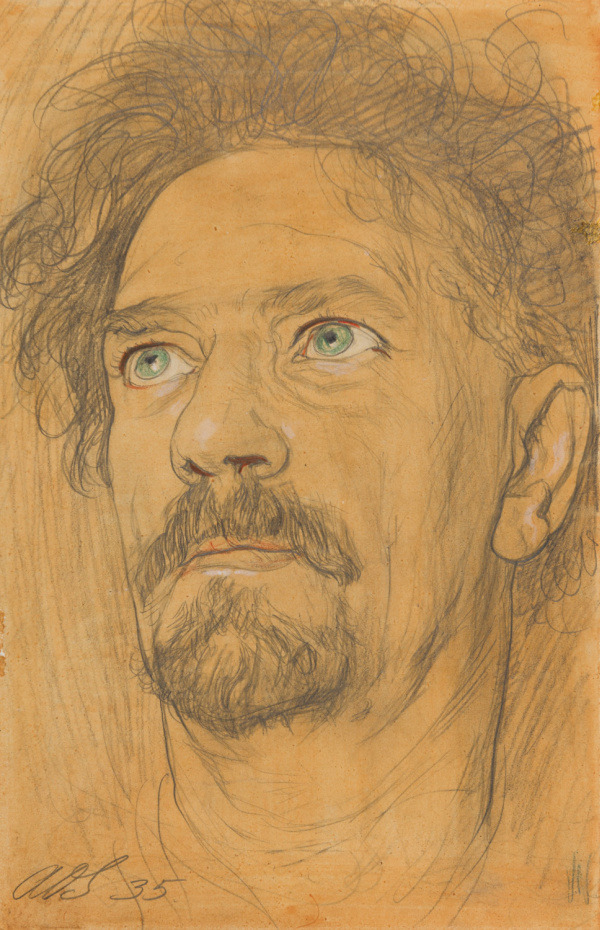
Austin Osman Spare, Self-Portrait, 1935
27 notes
·
View notes
Text
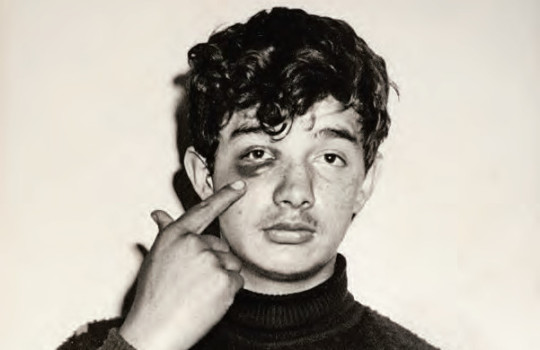
ÇA-A-ETÉ? AGAINST BARTHES
Joan Fontcuberta
Walter Benjamin aside, the most cited essay on photography in history is without a doubt Camera Lucida. It is Roland Barthes’ final book, and was published shortly before his death. With his poetic gaze and theoretical reflections, Barthes develops key concepts in the book, such as punctum and studium, which have since been incorporated into the heritage of photographic criticism. In one of the most significant passages, we find another central idea: “In Photography I can never deny that the thing has been there. There is a superimposition here: of reality, and of the past. And since this constraint exists only for Photography, we must consider it, by reduction, as the very essence, the noeme of Photography. What I intentionalize in a photograph is neither Art nor Communication, it is Reference, which is the founding order of Photography. Photography's noeme will therefore be: ‘That-has-been’” [Ça-a-été].
This ça-a-été constitutes the ontological bulwark of photography’s documentary value: without the certainty of “that-has-been”, all visual testimony ends up delegitimated. This is why it could be beneficial to analyse photo-journalistic snapshots in light of this criteria. For example, as a case study, we could take the photographic archive of the now-closed Mexican journal Alerta, a tabloid dedicated to blood and guts news stories, which in Latin America is referred to as “nota roja” [red note]. If we do an analysis, we are surprised to see how frequently the iconological pattern of the gesture of pointing appears: a figure in the image (a victim, a witness, an “expert”, whoever) points with a finger at someone or something in the composition to draw attention to it. These are theatrical, artificial situations where it is clear that the model is following the reporter’s instructions, while nevertheless making doubly clear the pretension of applying he principle of ça-a-été, in a way that is as naïve as it is rudimentary. We are witness to an effect of superimposed indexicalities: one passed down through photography and the other of the finger (the index) pointing. Both the camera lens and the finger focalise our perception towards something that has gone by. Yet the staging is so naïve, rudimentary and artificial that instead of emphasising, what it does is problematise the validating value of the camera, especially in genres like forensic and news photography, which should be characterised precisely by an aseptic, derhetorized treatment of information.
Barthes, perhaps, fascinated by the theatricality he had also dedicated enthusiastic studies to, sought to pass over this drift: “What is theatricality?”, he asked in 1971. “It is not decorating representation, it is unlimiting language.” Very well, then, but if so, ça-a-été is no longer a guarantee of objectivity, inasmuch as it explores staging. A triple staging, in fact, as all photography implies the staging of the object, the gaze and of the photographic device itself. It is from the conciliation of these stagings that language emerges. We can decide to not limit it, we can grant it all freedom available to it, but at the cost of breaking the contract of verisimilitude.
Unmasked by the overplayed gesticulation of accusing or pointing fingers, we discover that the noeme heralded by Barthes is more a theatrical operation than one of reference. “That has been”, indeed, but what, in fact, has really been? It is imperative to ask this when there is no spontaneity, but rather construction. Yet worst of all is that photography, in and of itself, tells us very little about “that”. Very little beyond scenery and costumes.
Joan Fontcuberta
11 notes
·
View notes
Text
Totk Spoilers.
These spoilers are story related (all below the cut) so please be mindful.
While I will reserve my full judgement for when I fully play the game, so far from what I hear the story is not too promising.
It seems overall better than BotW, but there are still issues, as well as lots of lore implications that are really going to throw everyone for a loop. I kinda want to address some of them, but bear in mind I myself have yet to play the game at all.
1. The game basically is identical to botw in terms of story beats
With a few minor exceptions, totk is essentially botw’s story, just a bit meatier. You start off in an area with “Great” in the title, where you meet the ghost of a past King of Hyrule, who guides you on your tutorial journey. Once you get all the necessary items for the game, you leave the tutorial area and go find a Sheikah who will give you more information. You then have to beat the four dungeons, while also locating the memories that star Zelda in the past. You eventually beat evil, get a secret ending if you gathered all the story-related elements, and then game over.
I’m already not impressed with this repeated structure, when the last time it did not work so well. Like heaven forbid if the sequel to botw tried something new.
2. There is no mention of the Triforce
While the Triforce is not a necessary ingredient for a Zelda game, it is noticeably absent this time, especially with the game starring Ganondorf. The first game missing it was not really a big deal, but a second adventure where the Triforce isn’t even mentioned is much more glaring. We do see Zelda’s hand glow like it did in the first game, but from what I can tell we don’t even see the symbol of the Triforce this time. It’s just iconology in the background, and that’s it.
Instead, the game focuses on “secret stones”, which are the magatama-like crystals we have seen in the trailers. These are the powers Ganondorf focuses on more. Why in the world totk would forgo one of the most iconic Zelda relics is a complete mystery.
Especially when we throw Ganondorf in the mix. It technically isn’t the first time Ganon/Ganondorf was in a game that didn’t feature the Triforce (FSA), but this is the first 3D game of this magnitude to do so. We waited 17 years for the return of Ganondorf, and it feels empty to have him here without the Triforce.
3. Totk feels disconnected to Botw
From what I have heard, there are many parts of Hyrule that feel like BotW just never happened.
Now it isn’t true that BotW didn’t happen. It did. There is a memorial Zelda made for the victims of the Calamity. Teachers give lessons to children about the past. Etc. However, these parts are small in comparison to the rest of the game.
It’s been reported that some NPCs seem to not know Link at all, or do not treat him as if they have met before, when they should have from botw. A lot of the Sheikah tech in the game has been pretty much erased as well. The Shrine of Resurrection is gone, the Divine Beasts are missing, etc. Instead, now, in place of the Sheikah technology is the Zonai stuff. And from what I can tell, no one really explains why this technology is gone. It just is.
Also no one seems to connect Ganondorf to Calamity Ganon’s appearance either. It’s apparently not even theorized. And Gloom and Malice are not treated as if they are the same evil, despite the fact that they should be.
4. Totk feels disconnected to Zelda lore in general
Zelda lore has always been a point of contention. Many fans feel that the timeline is complete nonsense. Other fans feel that the timeline is a necessary part of the experience.
Regardless of how you feel about it, there is some truth that Zelda lore could be cobbled together into a decently coherent timeline. But Totk really does something strange here.
Totk is basically the tale of how Ganondorf was sealed 10k+ years ago, but during a time when the Kingdom of Hyrule was founded. Essentially, the ghost-looking creature from the trailers is Rauru, the first King of Hyrule. Yes, you read that right. The first king of Hyrule, who founded Hyrule when his race descended from the heavens and intermarried with the humans living on the surface. Rauru himself married Sonia, a human woman with Time powers, while Rauru has Light powers.
Furthermore, Ganondorf is not the same Ganondorf from before. This is an entirely new Ganondorf, who eventually murders Sonia for her secret stone and uses it to transform into the Demon King. He is eventually imprisoned in the Imprisoning War, where Rauru sacrifices himself in order to contain Ganondorf’s body.
We learn that Zelda’s powers actually come from Sonia’s and Rauru’s, as she has both Light and Time powers. Oh yes, surprise! Zelda is a descendant of Zonai and Hylians. She has both Time and Light powers, potentially the power of the Triforce, and should still be the descendant of Hylia the goddess.
However, Hylia and the Golden Goddesses are hardly touched upon. It seems that Zelda’s powers primarily come from Rauru and Sonia instead, rather than the ancient goddess. It’s particularly strange because Zelda is supposed to be in the ancient past, but no one in the past seems to know much about Hylia or the Triforce. You would think that they would, and that present-day Hyrule just forgot about the Triforce and that the worship of Hyrule has existed since ancient times. But that doesn’t seem to be the case.
And finally, it appears that the ancient hero from the tapestry from BotW was a Zonai Link? It’s hard to tell exactly what is going on here, but the implication is that the ancient hero from 10K years ago was actually a Zonai (or Zonai/Hylian hybrid). This would be strange since Rauru states that he and his sister are the last Zonai in their era, but the hero of the Calamity came later.
This either means that the hero was not a Zonai descent, or that there were Zonai/Hylian hybrids running around that were not considered true Zonai, and that is why Rauru stated he and his sister were the last ones. After all, Zelda is Rauru and Sonia’s descendant. That means they should have children of their own, but we never see or hear about them.
If the hero was indeed of Zonai descent, that would mean that Link himself is also very likely descended from the Zonai himself.
All this lore has led a lot of fans to believe one of three things.
BotW/Totk is in a new continuity, separate from the older games.
BotW/Totk is retconning the past games entirely
BotW/Totk is so far in the future, that even the ancient past Zelda is in is still far in the future compared to the other Zelda games.
I’m more partial to the third one, but at this time I’m not certain.
Regardless, it is causing some confusion, and I expect this confusion to happen for a long time.
21 notes
·
View notes